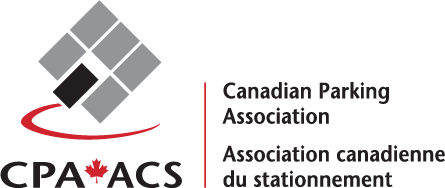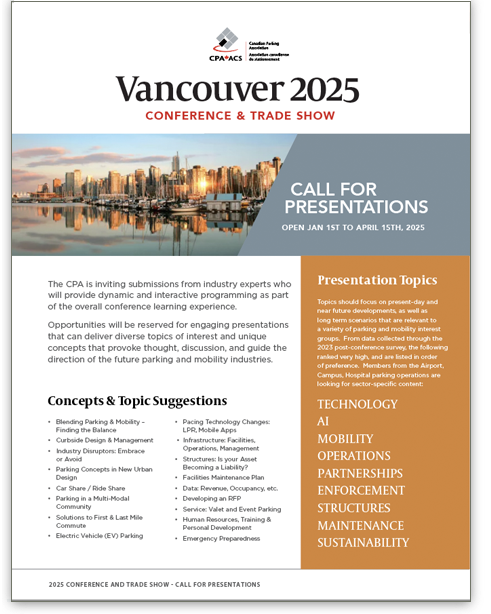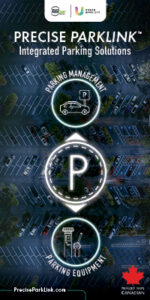By Steve Gorski
The Canadian government strongly supports the development of smart cities as a means to enhance urban sustainability, digital innovation, and public well-being. Initiatives like the Smart Cities Challenge launched by Infrastructure Canada and the Investing in Canada Plan have led to the investment of hundreds of billions of dollars in smart city development across Canada. And these investments have been perfectly timed. The introduction of innovative parking and mobility technologies in recent years is making it possible for the longstanding smart city dreams of federal, provincial, and municipal leaders and urban planners to finally be realized.
At the core of smart city initiatives are several key objectives aimed at improving the quality of life for citizens: reduced congestion and enhanced mobility, better energy management, more resilient and adaptive infrastructure, more efficient public services, and greater citizen engagement.
The Role of Technology in Smart Cities
Technology is the key enabler of smart city development, facilitating real-time data collection, processing, and analysis to drive efficient urban system management. The most important smart city technologies include:
- Parking Guidance Systems (PGS): Directs drivers to available parking spaces, reducing congestion and emissions caused by unnecessary searching.
- Parking and Revenue Control Systems (PARCS): Automates parking management, integrating payment, access control, and occupancy tracking.
- Intelligent Traffic Systems (ITS): Utilizes real-time data and algorithms to optimize traffic flow, enhance safety, and reduce travel times.
- Parking Pre-Booking: Allows drivers to reserve parking spaces in advance, streamlining city logistics and improving the user experience.
- AI for Predictive Wayfinding: Combines AI with real-time data to guide drivers to optimal routes and parking spots, reducing delays, and enhancing urban mobility.
Hardware is just part of the equation though. To create seamless smart cities, open interfaces and interoperability are crucial. First…
By Rick Neubauer
Curb management is rapidly becoming a major issue in Canada, particularly in densely populated cities like Toronto, Vancouver, and Montreal. Urban congestion is increasing for a number of reasons, including rising e-commerce deliveries, the growing presence of ride-hailing services, and the overall demand for curb space. This has created a pressing need for municipalities to rethink how they allocate and regulate curb space effectively.
Why is it so important for cities throughout Canada to address this issue? Rising competition for curb space has led to increased traffic congestion and related safety issues, a host of regulatory challenges as cities struggle to create curb management policies from scratch, and stumbles in achieving sustainability goals. Without well-planned curb management strategies, cities risk worsening congestion, facing increased carbon emissions, and suffering from inefficient use of public space.
The good news is that technology can help. As municipalities strive to develop smart city initiatives, artificial intelligence (AI) has emerged as a promising tool to enhance curb space efficiency as well as anticipate and meet evolving urban mobility demands. However, the rise of “AI-washing” has made it difficult for cities to differentiate between truly valuable AI-powered solutions and mere marketing buzzwords.
Identifying True AI-Powered Solutions
While AI has the potential to revolutionize curb management by leveraging predictive analytics and allowing cities to take a more proactive stance on managing curb real estate, not every technology that claims to use AI is genuinely leveraging its capabilities. Many companies in the parking and mobility sector promote their solutions as AI-driven when they are merely repackaging basic data analytics or rule-based automation. This phenomenon, known as AI-washing, makes it harder for decision-makers to identify which technologies offer real, strategic value. To avoid succumbing to AI-washing, city planners and managers should ask key…
By Stephanie Nowe-Morris
Parking structures are often overlooked in urban planning, especially in healthcare settings where demands are unique and multifaceted. The recently opened QEII Health Sciences Centre Parkade stands as a testament to Nova Scotia’s commitment to accessible and sustainable design, providing a new model for modern parking that balances functionality with community needs. This editorial explores how the QEII Parkade has transformed into a vibrant landmark, integrated part of Halifax, serving patients, visitors, staff, and the broader community.
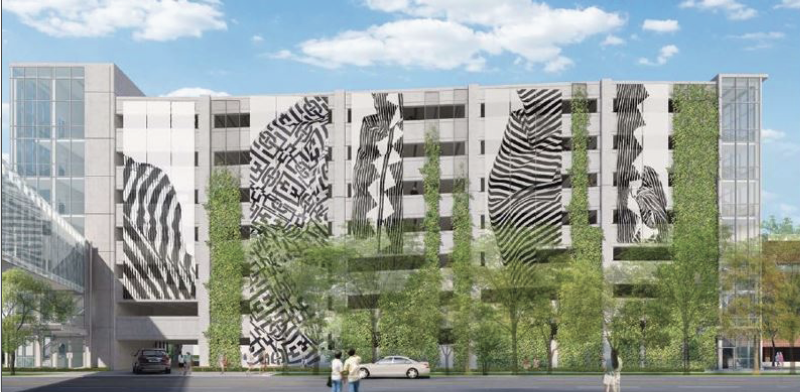
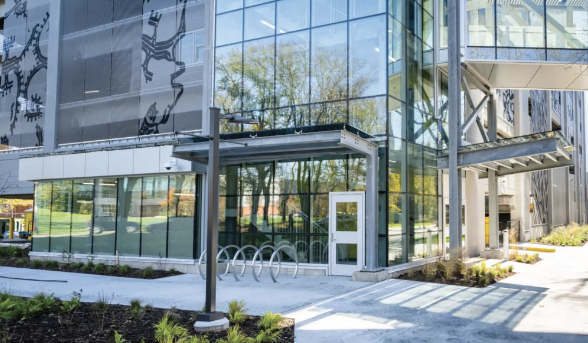
1. Designing for Accessibility in Healthcare
Accessibility lies at the heart of the QEII Parkade’s design. Located directly across the street from the Halifax Infirmary, accessible by a pedway the parkade provides convenient, centralized parking for patients, visitors, and healthcare staff, with a capacity for 540 vehicles. This proximity minimizes walking distances, offering seamless access for those with limited mobility and reducing stress for anyone navigating healthcare services.
To ensure universal accessibility, the parkade includes a range of thoughtful features. Ample accessible parking spaces, intuitive wayfinding signs, and resting areas have all been incorporated to prioritize comfort. A pedway connection from the parkade to the main lobby enhances safety and ease of access, and redundant elevators, tactile indicators for the visually impaired, and Staxi services further emphasize inclusivity. The QEII Parkade sets a new benchmark in accessible design for healthcare infrastructure, highlighting the importance of creating spaces that support all individuals’ needs.
2. Public Consultation: Engaging Stakeholders for Better Community Integration
Community integration was a key priority throughout the planning and design process of the QEII Parkade. Extensive public consultations took place to engage local stakeholders and address any concerns, ensuring that the parkade would be welcomed by the Halifax community. This…
By Todd Tucker
The Smart City. It has been the goal of urban planners and municipal leaders for years. When planners and politicians picture a smart city, they see an urban environment where technology and data collection improve the quality of life and the sustainability and efficiency of city operations.
For many communities, the most important manifestations of smart city planning revolve around mobility and parking. If visitors to an urban center can get to their ultimate downtown destination quickly, directly, and safely, the benefits are significant. Roads become less congested and, as a result, safer; the quality of life improves because of this reduced congestion; and local businesses are more likely to thrive because it’s easier for patrons and employees of local businesses to get downtown.
Smart city success is built on technology, and parking technology is the key. Specifically, parking guidance technology. Drivers need to park and making it easier to park will dramatically reduce congestion on city streets. There are several apps serving Canada that can provide basic information about where parking is available in a given city and how much it costs. But most are missing an essential element: occupancy data. These apps aren’t as useful as they could be if they don’t tell users whether there’s parking available in the parkade they’re choosing.
That’s why parking guidance technology is the driving force behind smart city parking planning. The technology already exists, and it’s up to Canada’s cities to implement those technologies.
The Power of Data
Smart cities run on data—data about where parking is available at that moment. The technology to produce the data is available, but so far, most cities and private parking owners haven’t taken full advantage of it.
Parking guidance technology makes it easy to…
Electric Vehicle Performance in Extreme Winter Conditions
By Wayne Sum and Bill Franklin
Introduction
Few denizens of Canadian cities give thought to the sophisticated and robust civic infrastructure and organization that enables a safe and enjoyable life whether uptown, downtown or in suburbia. Clean, well lit, well built and maintained streets, effective policing, parking, garbage collection, water and sewage, libraries, parades, medical centers among a multitude of other services all directly impact the satisfaction and safety of city residents.
Management of a dynamic and resilient city will consider key factors that can be employed in an emergency, whether it be political protests, rampant homelessness to fires, flooding or intense cold and blinding snow.
As the fires in California vividly attest, global warming and drought has intensified the desire to reduce reliance on internal combustion engines in favour of electric vehicles that get their energy for locomotion directly from the sun, wind or water (hydroelectric). In this article, we look at the challenges of achieving an all-electric fleet while retaining the resilience required from municipal services.

Massive fires in Ventura county California, seen by author driving on Highway 101 from LA to Santa Barbara on November 6, 2024.
Consideration of EV’s touch on the following topics:
- Saskatoon’s Electric Vehicle goals
- Electric Vehicle (EV) performance in general
- A closer look: Nissan Leaf
- Winter Driving Conditions and impact on EV driving range
- Theoretical look at
- Impact of cold on battery performance
- Impact of cold on power consumption
- Real World Tests: Consumer Reports, American Automobile Association
- City of Saskatoon’s pilot EV experience
- Recommendations to advance electrical vehicle utilization
The road to reducing Saskatoon’s carbon footprint starts here…

By Nigel Bullers, Shirley Rodriguez, and Paul Yakutchik
In a bustling city like Vancouver, where urban density and mobility challenges are constantly on the rise, creating a seamless parking experience is critical. EasyPark Vancouver, in collaboration with technology partners Fennix Systems and ZipBy, has taken a bold step toward revolutionizing the parking landscape. This summer, a groundbreaking technology pilot was launched at two of Vancouver’s busiest parking locations—Lot 19 and Lot 126/31—ushering in a new era of frictionless parking.
The initiative aims to enhance safety, efficiency, and sustainability while making parking as effortless as driving on a toll highway. The results are in, and the innovative solution is already making waves in the industry, setting a benchmark for what parking can—and should—look like in the future.
A Vision for Seamless Parking
At its core, this project addresses a simple yet vital need: the demand for a faster, easier, and more secure parking experience. Traditional parking systems, with their reliance on ticket dispensers and manual payment methods, often create bottlenecks and customer frustration. EasyPark recognized that a transformative solution was needed to eliminate these barriers.
In partnership with Fennix and ZipBy, EasyPark deployed cutting-edge technologies designed to streamline every step of the parking process. The solution integrates Fennix’s AI-powered license plate recognition (LPR) cameras with ZipBy’s innovative mobile app, providing drivers with touchless entry, automated payment, and seamless exits. The system is designed to provide a “drive-through” experience, allowing customers to enter, park, and leave without ever interacting with a meter or gate.
This transformative approach relies on dual optical and infrared LPR cameras with an impressive 99% accuracy rate. These cameras identify vehicles in real-time, enabling the system to open gates automatically. Meanwhile, ZipBy’s app leverages Bluetooth and GPS to track parking sessions, notify drivers when…
By Ebby Zachariah and Chris Perry
Over the past 20 years mixed-use development has become a staple of urban development in Canadian cities. It’s easy to see its appeal for developers and property owners. By combining several different use cases within a single development, developers and owners can benefit from a variety of potential revenue sources. And the diversity of uses can provide stability because when one sector slows down there will be one or more other uses remaining to pick up the slack.
Typically, owners and developers—and urban planners, for that matter—view mixed use solely in the traditional context of a development combining parking, and then some mix of retail, commercial, residential, and/or entertainment development. But there’s another form of mixed-use development that’s worth considering: parking. Yes, just parking.
As parking professionals, we instinctively understand how a development that revolves solely around parking can be an example of mixed-use. Most parking facilities serve multiple user groups. These groups have different needs, use parking assets differently, and may pay different rates. This is true of commercial, residential, and even institutional development with parking assets.
When parking owners start to think about their parking assets in this context, it opens up a whole new world of revenue and tenant amenity opportunities.
A Whole New Ballgame: Parking Management Technology
Until recently, it wasn’t possible to manage parking assets effectively and efficiently when there were multiple use cases. Parking had to be treated as an afterthought at best—and a throw-in at worst—because parking management wasn’t automated. It was just too costly and time-consuming to manage different parking use cases by hand.
With the emergence of parking management software platforms, however, owners can now manage each user group differently, providing access to specific areas of a parking facility, offering access at…
By Chris Scheppmann
The proliferation of parking guidance technology has arguably been the most important parking technology trend over the past ten years. The past decade has seen guidance evolve from a valuable tool that many owners considered a luxury to an essential element of parking management. And with maturation of the smart city movement and the introduction of smart city platforms like the Park Detroit app, parking guidance has emerged as the indispensable parking and mobility technology.
Until recently, parking owners were faced with a significant cost/benefit tradeoff when selecting parking guidance technology. There were only two options: expensive single space sensor systems or inexpensive in-motion loop systems. For years, the single space sensor was the gold standard. They are very accurate, but also very expensive. A complete over-the-space sensor system could cost anywhere from $500 to $750 per space, given infrastructure limitations and signage requirements. So, for a garage with just five hundred parking spaces, the cost of installing a reliable guidance system would be around $250,000 and could run as high as $375,000. And that’s just the initial installation cost. There may also be maintenance and repair costs to factor in.
Traditional in-motion counting solutions, on the other hand, such as loops or ultrasonic sensor technologies are inexpensive. But they are also very inaccurate. These systems count vehicles as they enter and leave a parkade, using vehicle sensing technologies. While these systems are much less expensive than single space sensors, they are also considerably less accurate. They also typically operate as stand-alone systems and can’t be integrated with other platforms or software.
However, in recent years, the introduction of vision-based Intelligent Camera technology has filled the gap between single-space and traditional sensor systems for in-motion car counting. Intelligent camera technology leverages the latest advancements…
By Adamo Donatucci
Electric vehicles (EVs) are becoming increasingly popular in Canada as the country aims to achieve its 2050 zero-emissions goal, a target set to significantly reduce greenhouse gas emissions and combat climate change. Developing a robust EV charging infrastructure is no longer a future idea; it’s here. This makes now the ideal time for parking facility operators to prepare their facilities for this transition.
Understanding the EV Landscape in Canada
The electric vehicle market in Canada is experiencing rapid growth, driven by a combination of government incentives, charging preferences, and advancements in EV technology. Consumers today expect parking facilities to offer reliable and convenient charging options. With the growth of EVs, parking operators must stay ahead of these expectations by providing adequate charging infrastructure. This is not just about meeting current demand but also preparing for the future as more Canadians switch to electric vehicles. Understanding the regulatory environment is crucial, as compliance with local laws and standards will be necessary to successfully deploy EV infrastructure.
Assessing Current Infrastructure and Future Needs
Before installing EV infrastructure, parking facility operators need to conduct a comprehensive assessment of their existing facilities. This includes evaluating the current electrical capacity, layout, and potential areas where electric vehicle charging stations can be installed. It’s essential to consider both current usage patterns and potential future needs to ensure that the infrastructure will be adequate as the number of EVs grows.
Choosing the Right EV Charging Technology for Your Operation
Selecting the appropriate type of EV charging station is a critical decision for parking facility operators. There are several types of chargers, including Level 1, Level 2, and DC fast chargers, each suited for different scenarios. Choosing technology that integrates seamlessly with existing parking management systems is important to provide a smooth…
As cities around the world shift towards sustainable transportation, the collaborative efforts of both public and private sectors in expanding electric vehicle (EV) charging infrastructure are becoming increasingly vital. In Toronto, where transportation accounts for about 32.5% (Opens in a new window) of all greenhouse gas emissions, the push for electric vehicles is a crucial element of the city’s strategy to achieve net zero emissions by 2040.
Toronto has set a goal of reducing greenhouse gases by 65% by 2030. How can a shift to EVs help reduce the city’s carbon footprint and what steps do we need to get there?
To help answer these questions, we sat down with Ian Klesmer, Director of Strategy and Grants with The Atmospheric Fund to learn more about the steps Toronto must take to support the growth of EVs.
Let’s talk a bit about the role the public sector should play when it comes to EV charging. Why should cities be involved in this space in the first place?
Ian Klesmer: All levels of government have climate commitments and carbon reduction goals, and electric vehicles are a crucial part of achieving these goals. But it’s still a nascent sector that needs public support, especially until industry becomes more mainstream and reaches a tipping point. The public sector can help accelerate and scale EVs through incentive programs, smart policy frameworks and direct investments.
At the local level, hundreds of cities across Canada have declared climate emergencies and are actively seeking new and effective ways to reduce their carbon footprints. In urban environments, transportation is a major source of emissions, often second only to buildings. A wide range of actions are needed to reduce emissions from the transportation sector, including expanding cycling and transit options and densifying cities. However, from strictly a carbon…

